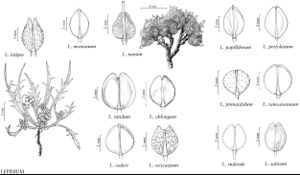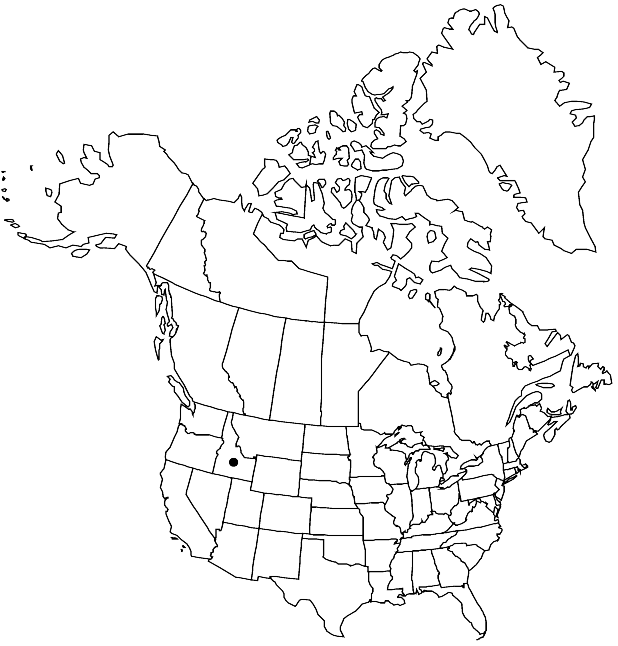Lepidium papilliferum
Bot. Gaz. 56: 474. 1913.
Annuals or biennials; puberulent, (trichomes clavate). Stems several from base, ascending, branched (several) distally, (0.3–)0.5–2.3(–4) dm. Basal leaves (soon deciduous), not rosulate; blade often bipinnately divided. Cauline leaves attenuate to petiolelike base, to 1 cm; blade pinnatifid to pinnatisect, obovate to oblanceolate in outline (lobes oblong to linear), 0.5–4 cm × 3–15 mm (smaller distally), base not auriculate, margins (of lobes) entire or dentate. Racemes slightly elongated, (dense) in fruit; rachis puberulent, trichomes straight or curved, clavate. Fruiting pedicels divaricate to horizontal, straight or recurved, (not winged), (2.5–)3–6(–7.5) × 0.2–0.3 mm, puberulent adaxially or throughout. Flowers: sepals ovate to broadly oblong, 1.5–2.2 × 0.8–1.1 mm; petals white, orbicular to spatulate, 2.5–3.7(–4) × 1.5–2.5 mm, claw 0.8–1.5 mm; stamens 6; filaments 1.5–2 mm, (trichomes clavate); anthers 0.4–0.6 mm. Fruits orbicular to broadly ovate, 2.2–3.6 × 2–3.4 mm, apically winged, apical notch 0.1–0.3 mm deep; valves thin, smooth, often not veined, glabrous; style 0.2–0.8 mm, exserted beyond apical notch. Seeds ovate, 1.2–1.8 × 0.9–1.1 mm.
Phenology: Flowering May–Jun.
Habitat: Sagebrush plains, desert flats, edge of playa
Elevation: 600-1700 m
Discussion
Of conservation concern.
Lepidium papilliferum is distributed in Ada, Canyon, Elmore, Gem, Owyhee, and Payette counties.
Selected References
None.

